
Lot 19
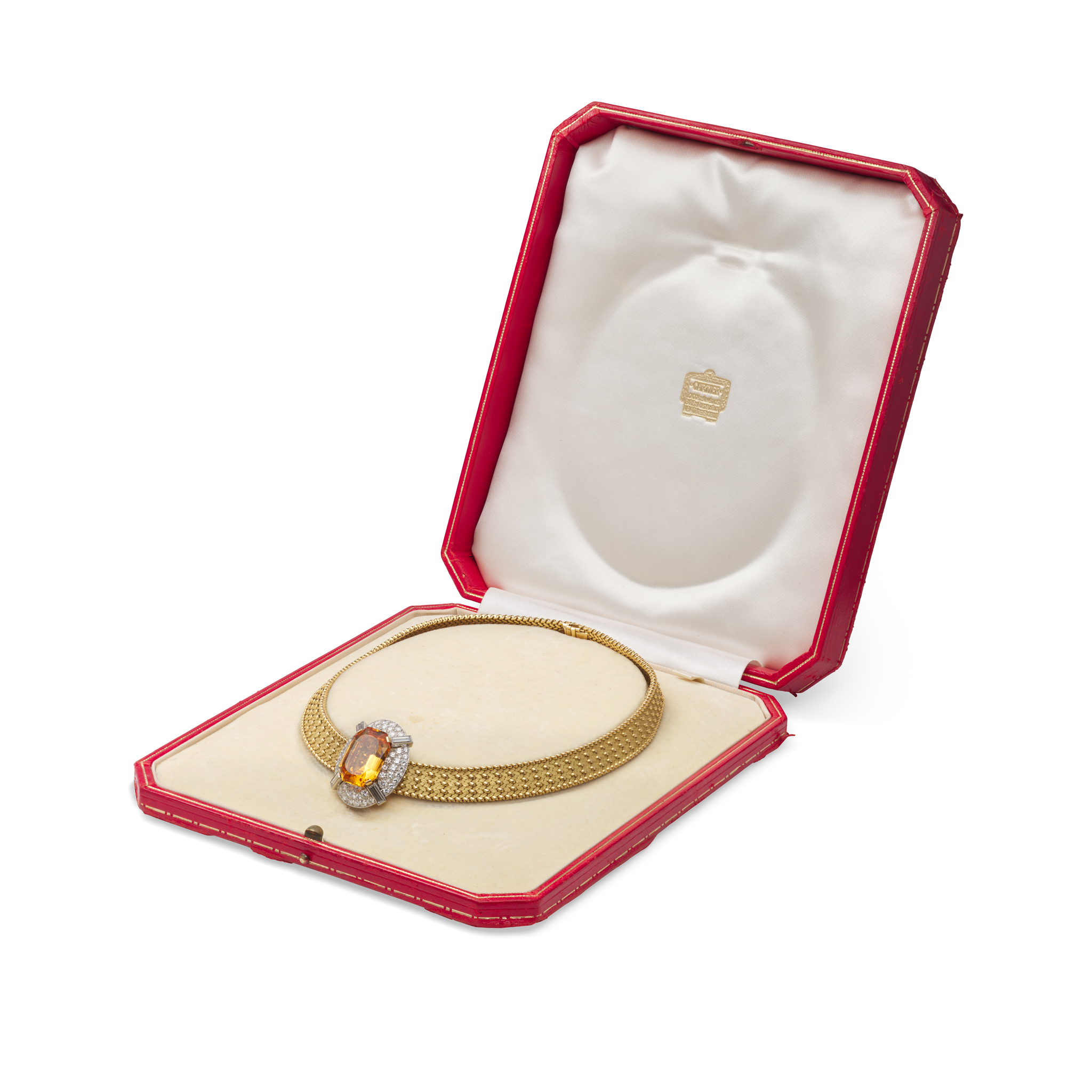
Cartier: A gold necklace by Georges Lenfant with a detachable Imperial topaz and diamond cluster ‡
1960
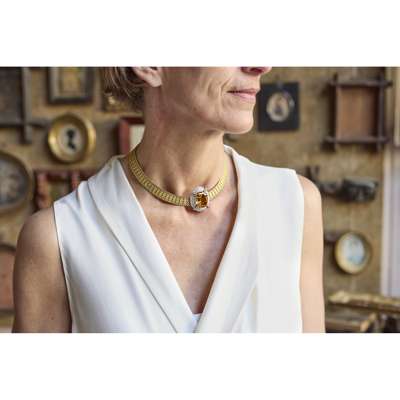
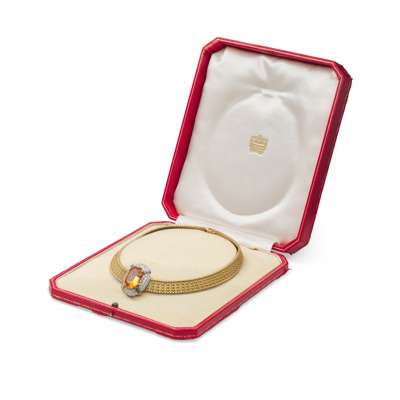
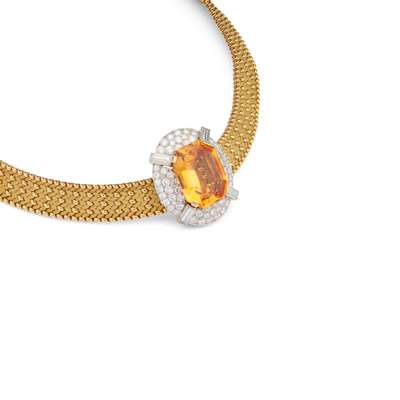
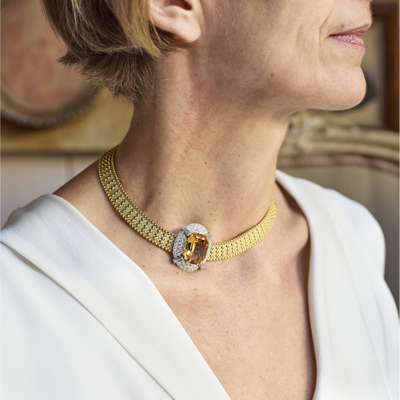
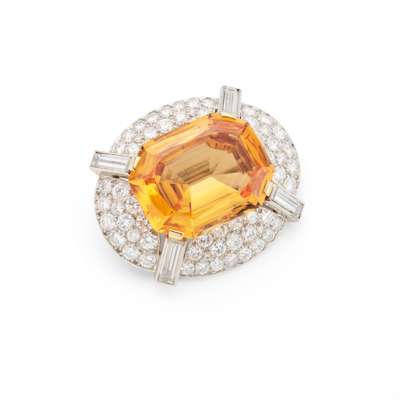
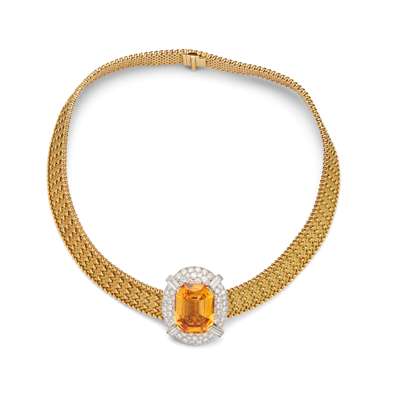
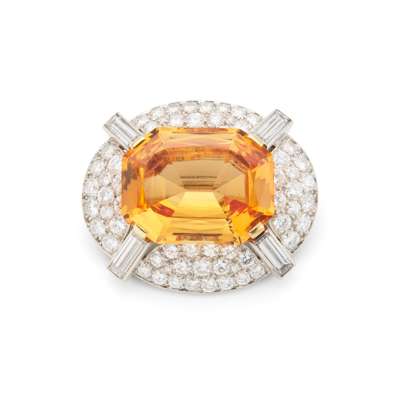



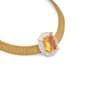
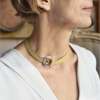
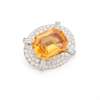
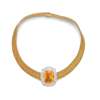
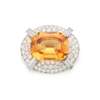

Auction: 29 April 2025 from 14:00 BST
Description
The 18 carat gold necklace of polished and matte woven design in a herringbone pattern, featuring a detachable spacer that converts into a brooch, centrally set with a step-cut topaz, each of the four claws buttressed by a baguette-cut diamond, within an oval angled surround pavé-set with brilliant-cut diamonds, diamonds approx. 4.50 carats total, topaz approx. 24.50 carats, necklace signed Cartier, partial maker's mark GL for Georges Lenfant, numbered, maker's mark JC and London import mark, French export marks, brooch unsigned, lengths: necklace 37.3cm, brooch 3.3cm
Accompanied by a fitted Cartier case.
Please note this lot will be subject to VAT of 5% on the hammer price.
Footnote
The design of this brooch is identical to two which featured in a Cartier necklace previously sold at Christie's sentinel auction “Jewellery and Objects by Cartier” held in Geneva on the 25 May 1993, lot 799. As with this example, that necklace was unsigned but was presented with a catalogue footnote “Although not signed, this necklace was purchased by the present owner at Cartier, London in July 1962”.
Georges Lenfant (sometimes seen as "L’Enfant") and his son Jacques Lenfant are regarded as some of the most skilled goldsmiths of the 20th century. Their distinctive work is now highly sought after by collectors. However, throughout their careers they operated behind the scenes, making exquisite jewellery for the famous Parisian jewellers of the Place Vendôme and Rue de la Paix. He was a workmaster for Cartier, as well as making creations for Mellerio, Hermès, and Van Cleef & Arpels amongst others.
Born into the jewellery trade, Georges Lenfant set up his own workshop around the turn of the last century. In 1903 he was listed in the ‘Revue de la Bijouterie, Joaillerie, Orfèvrerie’. By 1909 he had registered his distinctive maker's mark.
In 1915 Jacques Lenfant began helping in his father's workshop at just 11 years old. He continued his education studying in France, Germany, Austria and England before formerly joining the company in 1927. Following the Second World War, Jacques took over control of the company. It was Jacques who in the late 1950s pioneered the now iconic woven and textured goldsmithing techniques for which the house became world famous.
Jacques Lenfant died in 1996 and the company was subsequently purchased by Benjamin Leneman in 1998, thereafter becoming the Bouder workshop. Jacques teaching roles at the Chambre Syndicale de la Joaillerie, Bijouterie et Orfèvrerie were testament to his dedication to goldsmithing education. In 1980 he created an award to celebrate top students, which is still awarded today. He also wrote the book Le Livre de la Chaîne, which was commissioned by the Chambre Syndicale, but was sadly only published posthumously in 1996.
The pattern of this necklace is identified in Le Livre du Chaine as "Tissu Polonais Presse Empire Relief" or Polish Press Empire Relief Fabric, see page 90. This was a term Lenfant used to describe a distinct type of woven gold chain designed as an homage to patterns in traditional Polish and Milanese fabric.
















